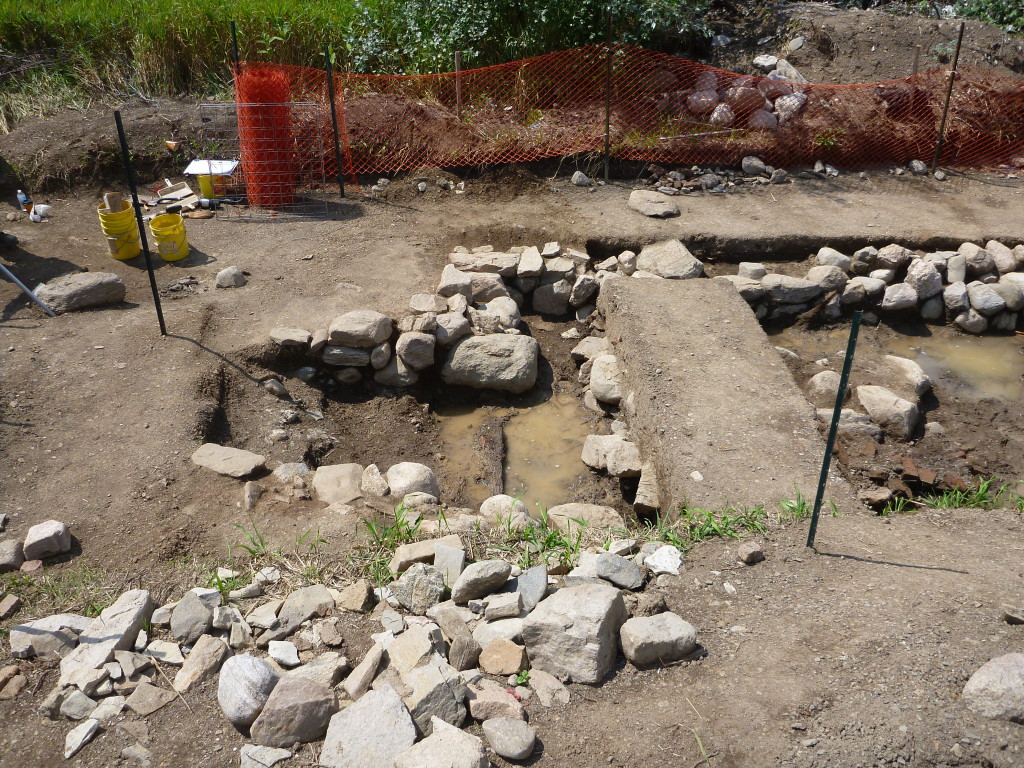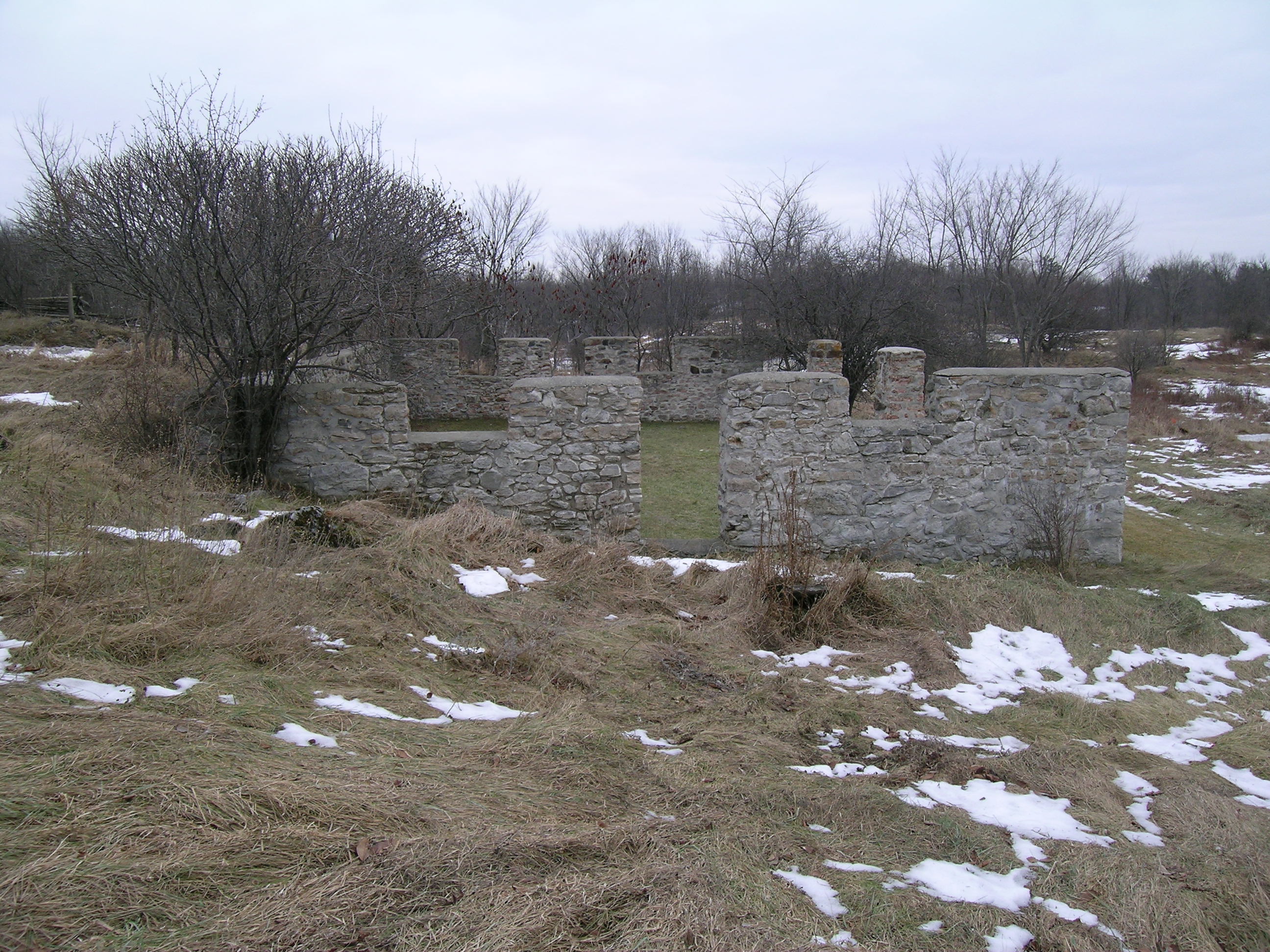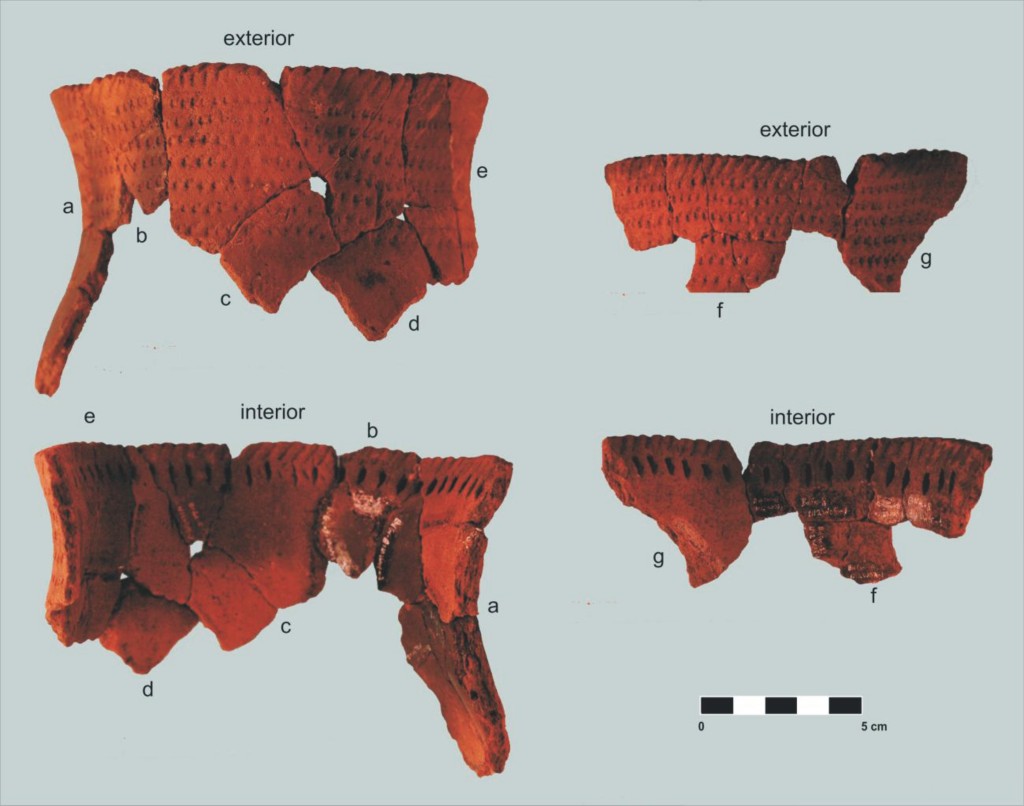The Davis Site (BiFv-23)
Past Recovery was retained by Morrison Hershfield Ltd. to undertake the Stage 4 archaeological assessment of the part of a section of land required for a new turning lane within the City of Ottawa. This followed recommendations made in the previous stages by Past Recovery indicating the Davis Site had cultural heritage value and merited Stage 4 mitigation. Excavation was the preferred option.
The Stage 4 assessment identified the roughly formed foundation walls and basement for the mid- to late-19th century British Hotel. These were excavated and recorded where they extended into the study area. This included a ramp entrance at the southern end of the structure (shown here), at the base of which were the remnants of a wooden door frame. A total of 12,466 artifacts related to the use of the hotel were found across the site. The majority of these items dated to the mid- to late-19th century, appearing to indicate the hotel was in use during that time (circa 1855 to 1880).


Lally Homestead (BeGb-15)
In 2008, Past Recovery was retained by Ontario Parks to undertake a Stage 1 archaeological assessment of the Lally Homestead within Murphys Point Provincial Park and a Stage 3 surface collection of midden deposits in a small area of the homestead site where new trail development was planned. The assessment also included the recording of two maple sugar furnaces at the Lally Sugar Bush site.
The Lally Homestead and its associated sugar bush represent a significant example of late-19th and early 20th-century small-scale mixed farming on the Frontenac Axis geological formation, and it is an important cultural heritage resource within Murphys Point Provincial Park. The site offers a wealth of interpretive and research opportunities to explore the park’s theme of pioneer settlement on the Canadian Shield.
The Bresee Site (BdGc-8)
Past Recovery was retained by McIntosh Perry Consulting Engineers Ltd. to perform a Stage 1 and 2 assessment on an individual’s private property, located on Wolfe Lake near Westport, which would be affected by an Official Plan Amendment application. The assessments resulted in the discovery of the Bresee Site, a small seasonal campsite occupied briefly during the early Late Woodland period. Given the type and age of the material recovered, the Bresee Site met provincial requirements for sites requiring Stage 4 mitigation of development impacts.
The Stage 4 mitigation plan for the Bresee Site involved the complete excavation and documentation of the remains of a small pre-Contact Indigenous campsite. The results of the artifact analysis, which included the identification of at least 11 ceramic vessels, suggest the site was occupied sometime between the end of the Middle Woodland period and the end of the Late Woodland period (A.D. 700 to 1300). Decorative attributes appearing on the ceramic material, as well as the method of manufacture and vessel form, are indicative of Sandbanks/Point Peninsula and Pickering ceramic traditions.

